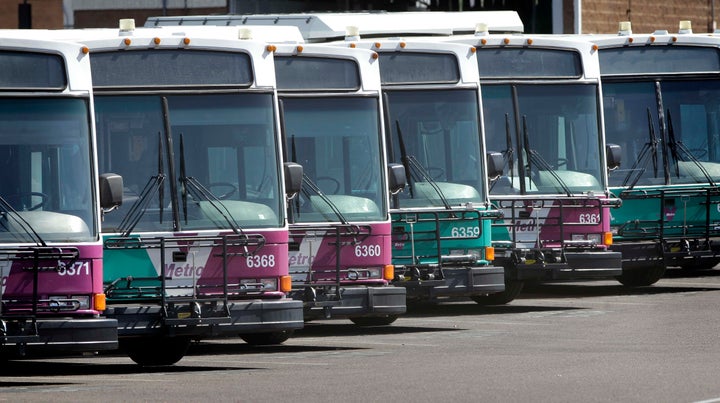
NEW YORK -- The people are in one place, many of the new jobs in another, according to a recent report.
"Missed Opportunity: Transit and Jobs In Metropolitan America," a May report from the Brookings Institute, found that nearly 70 percent of people in large metropolitan areas live near some form of public transit. And despite transit route coverage varying from region to region, one rule held true: it's city dwellers with low incomes that have the best access to public transportation. Suburban communities occupied by middle-income and low-income families have the least access.
That would seem to benefit city-dwellers. But there's a problem.
Employment decentralization is increasing, and many new jobs -- whether in retail, health care, educational services or manufacturing -- are located in suburban and even further-flung exurban neighborhoods, according to the report. The task of getting to newly-created jobs has grown more difficult for low income, public transportation-dependent workers.
Most metro-area residents can only get to about 30 percent of jobs within 90 minutes using public transit, the report found. And it's even worse for those seeking low- and middle-skill jobs, as only about 25 percent of those jobs can be reached within that same timeframe using public transit.
Low-income suburbanites, a large and growing group, face trouble, too. Because of limited transit networks in most suburbs, these workers can only access 22 percent of low- and middle-skill jobs, according to the report.
Local governments have cut back transit budgets and in many cases actual transit routes because of declining tax revenue and large pension and health care obligations. When many workers need public transit to get to work, scaling down transportation can also hurt a city's ability to recover, the report said.
In April, The Huffington Post's William Alden reported that in 2009 there were more than 40,500 jobs in Wisconsin alone that were inaccessible to people who do not have cars. In Milwaukee County budget cuts have slashed bus service, measured in hours, by 20 percent since 2001.
Despite those sorts of cuts, across the country, public transportation use hasn't declined in any serious way. In the last quarter of 2010, public transport use was down by less than one percent when compared to ridership recorded during the same period in 2009, the American Public Transportation Association reported.
This jobs-transportation disconnect has helped to fuel the nation's stunningly high black unemployment rate, Roderick Harrison, a Howard University Sociologist and fellow at the Joint Center for Political and Economic Research, told The Huffington Post in April.
"The jobs are being created in the sorts of places you can't get to without a car or without dedicating significant time and significant resources to the commute," Harrision said.
Workers of color are disproportionately clustered in low-pay and low-skill jobs, making them more likely to be dependent on public transportation. That was the reality before the recession, and it hasn't changed now that the recession has ended, Harrison said.
In May, the country's overall unemployment rate rose to what many analysts are describing as a disappointing 9.1 percent, according to the Bureau of Labor Statistics. While serious, it's better than the black unemployment rate, which has climbed to 16.2 percent. Latino unemployment also hit 11.9 percent in May.
Americans have also been less prone to move to take jobs, making adequate public transit all the more important. Census data released last month indicates that since the recession first began, people are moving around the county less frequently than at any time since the government began tracking migration between states.